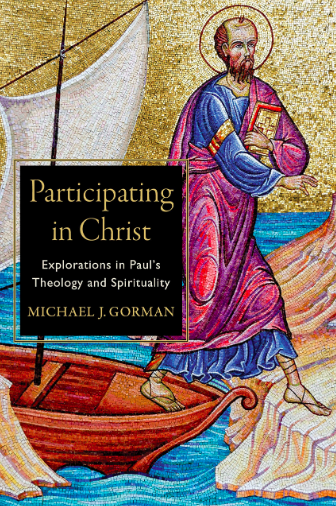In Sharon Baker’s world “violence” is bad. That’s fine, but it sure would help if she defined the term for us. Frankly, I can’t figure out what she means by the term “violence.” What I can see in her book, Razing Hell: Rethinking Everything You’ve Been Taught About God’s Wrath and Judgment, is that judgment is violence, eternal punishment is violence, hell is violence, war is violence, and it sure seems to be that any kind of retributive justice is violence. Whence such a definition of “violence”?
 And because she doesn’t define violence, she can label things as violent and make them inherently problematic. Both Jacques Derrida and Hans Boersma have studies of violence, but Boersma shows that elective love – the sort of thing we do every day in choosing those with whom we are intimate or friends – can be seen as a form of violence.
And because she doesn’t define violence, she can label things as violent and make them inherently problematic. Both Jacques Derrida and Hans Boersma have studies of violence, but Boersma shows that elective love – the sort of thing we do every day in choosing those with whom we are intimate or friends – can be seen as a form of violence.
So her chp 5, “Rethinking the Violence of God,” is riddled with the problem of a lack of definition. So far as I can tell, the entire book is built upon her perception of “violence” and her lack of defining the term makes it difficult to make her case.
Here are my questions: Is judgment by God “violent”? Is judgment of a nation on the plane of history “violent”? Or is it “violent” only when it becomes eternal and forever? Is the word “violent” slippery? What does it mean?
Her contention is that the ancient world of the Old Testament was a world of where the “law of retribution” reigned, and wherever everything was interpreted as willed by God, and where humans assigned and attributed to God their violence. God thus became controlling and retributive. She then suggests – she’s sensitive here – that Israel “fell into the same trap.” She asks if their preconceived ideas got projected onto God? “We don’t know for sure.” My response: C’mon, the whole book is premised on the fact that they did.
Her observation: “But seeing the texts that depict God as a violent, rage-filled deity as part and parcel of the ancient cultural perspective in no way compromises the truth of God’s Word” (54).
Again, she trots out a good sampling of evidence of biblical examples wherein the violence is overridden by mercy and love. E.g., Genesis 4 where God marks Cain in order to curb violence – it is right here that Baker could have done us all a service: she could have done a “redemptive movement hermeneutic” on the growing development of distancing from violence in the Bible. But, she does sketch numerous examples of God’s grace and ways of peace and reconciliation. I’m on board with this.
“We just can’t reconcile the differences between a God who exacts justice through violence and a God of peace whose loving-kindnesses never cease, who loves all people, and who desires a restored relationship with them” (57). But we can “decide which texts we will focus upon, which image of God we will use as a basis for our own behavior” (57).
The main message in the Bible is God’s desire for reconciliation, our joy, God’s glory, peace, love, and forgiveness. No argument here.
So she proposes the “Jesus lens,” and here she fastens upon Jesus’ use of Isaiah 61:1-2 by Jesus in Luke 4:16-30, and offers a standard interpretation: the decision by Jesus not to include “and vengeance for the Gentiles” indicates the “Jesus lens” of peace and reconciliation. Unfortunately, the same Jesus who said that also said Mark 13, and squaring these two kinds of texts is not simple. The Jesus lens then looks like this: “God in Christ interrupted the cycle of violence with divine love, seeking to reconcile and restore rather than to punish and retaliate” (60). A classic false dichotomy that is found together over and over in the Bible, including often in the teachings of Jesus.
This “Jesus lens” leads her to this conclusion: “And it’s very hard to believe, hook, line and sinker, that the God revealed to us through Jesus would ever agree to throw sinners into eternal punishment in the unquenchable fires of hell” (64). And the words she chooses to use here, ironically, are words that come from Jesus as often as anyone else in the New Testament.
She appeals then to Rene Girard’s scapegoat theory to explain the origins of hell-thinking: communities arise with mimetic rivalry and find a way to focus their tensions on a scapegoat, upon whom they use violence in order to rid society of the tension and violence. The “traditional hell myth” (66) fits into this Girardian scapegoat theory.











